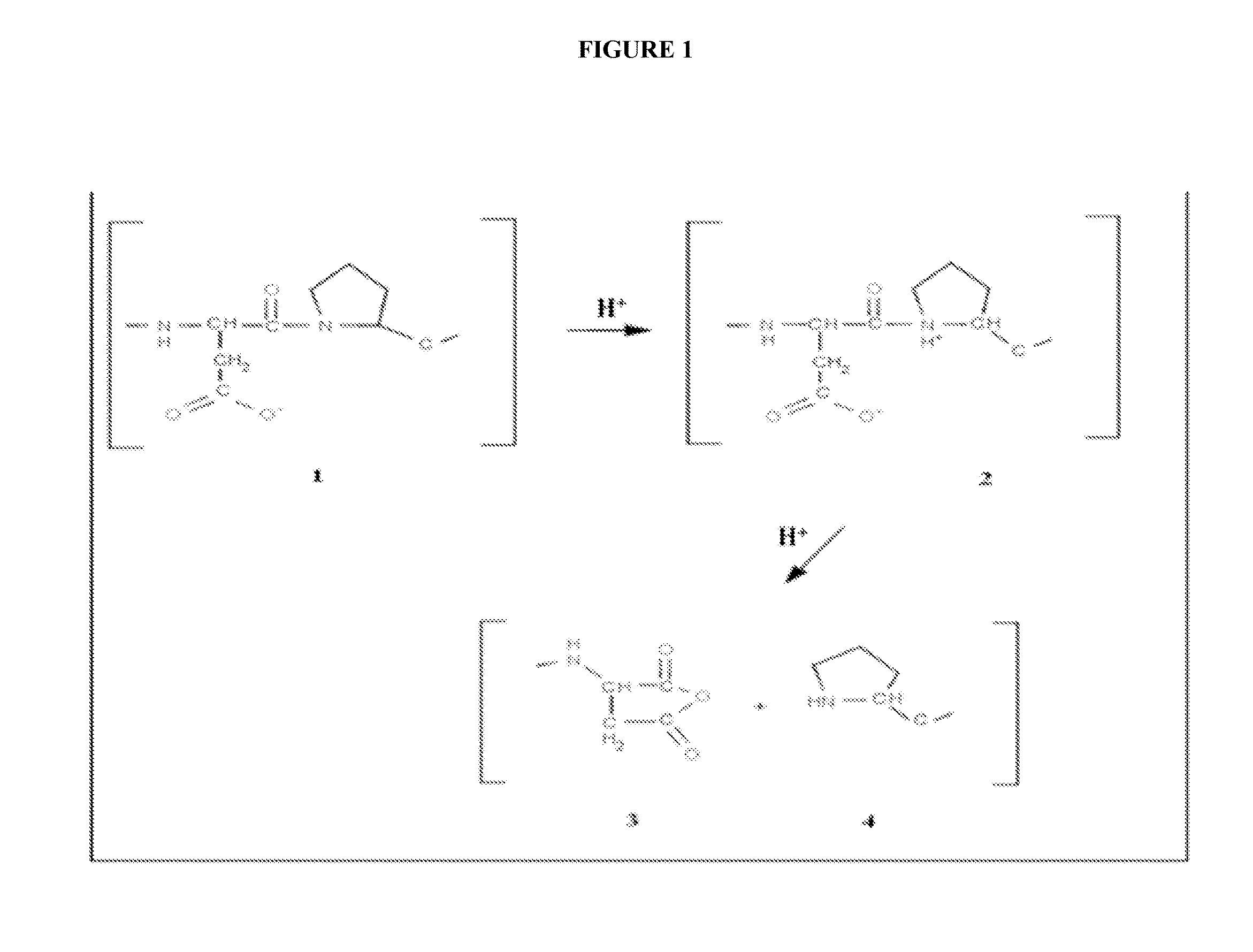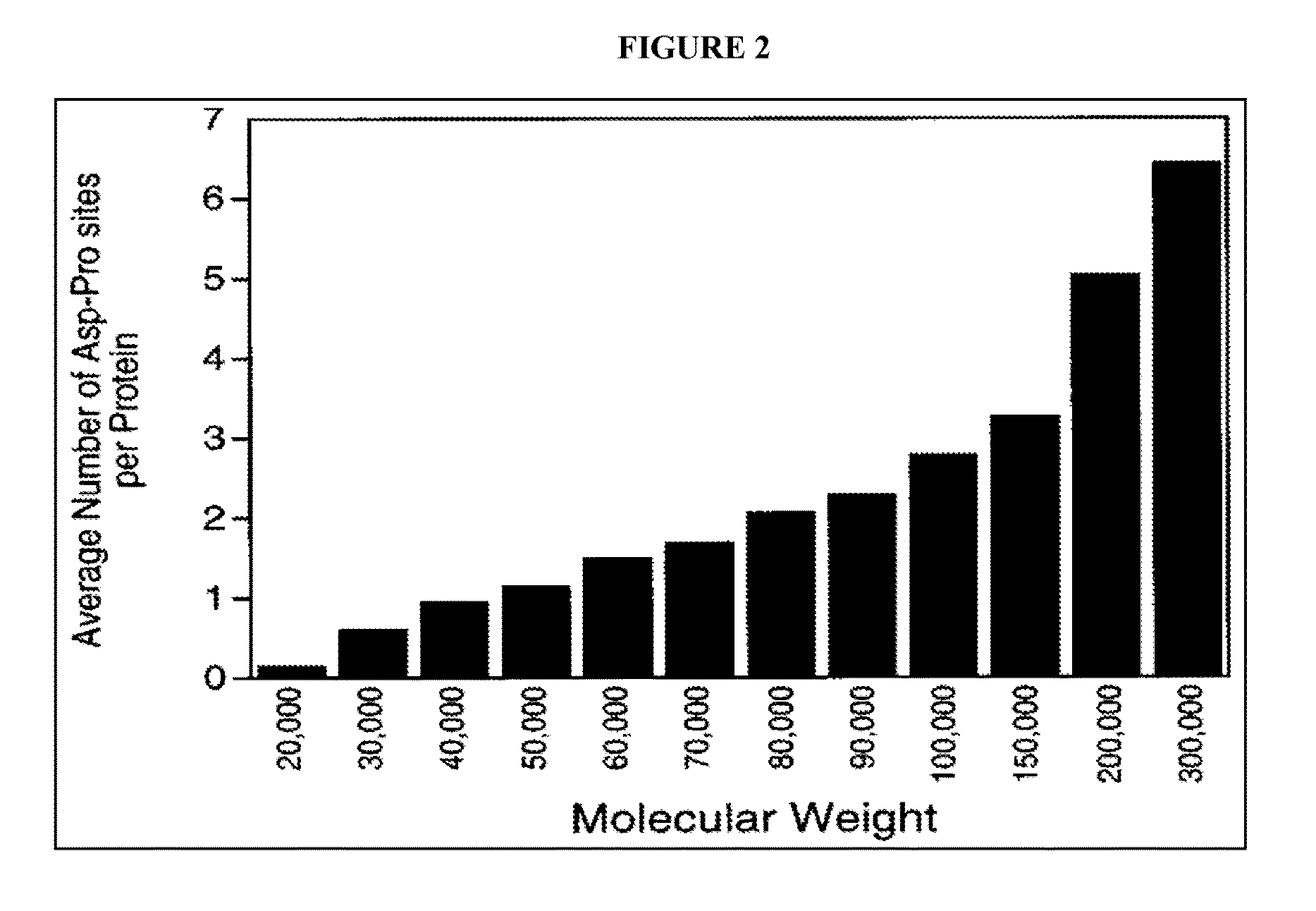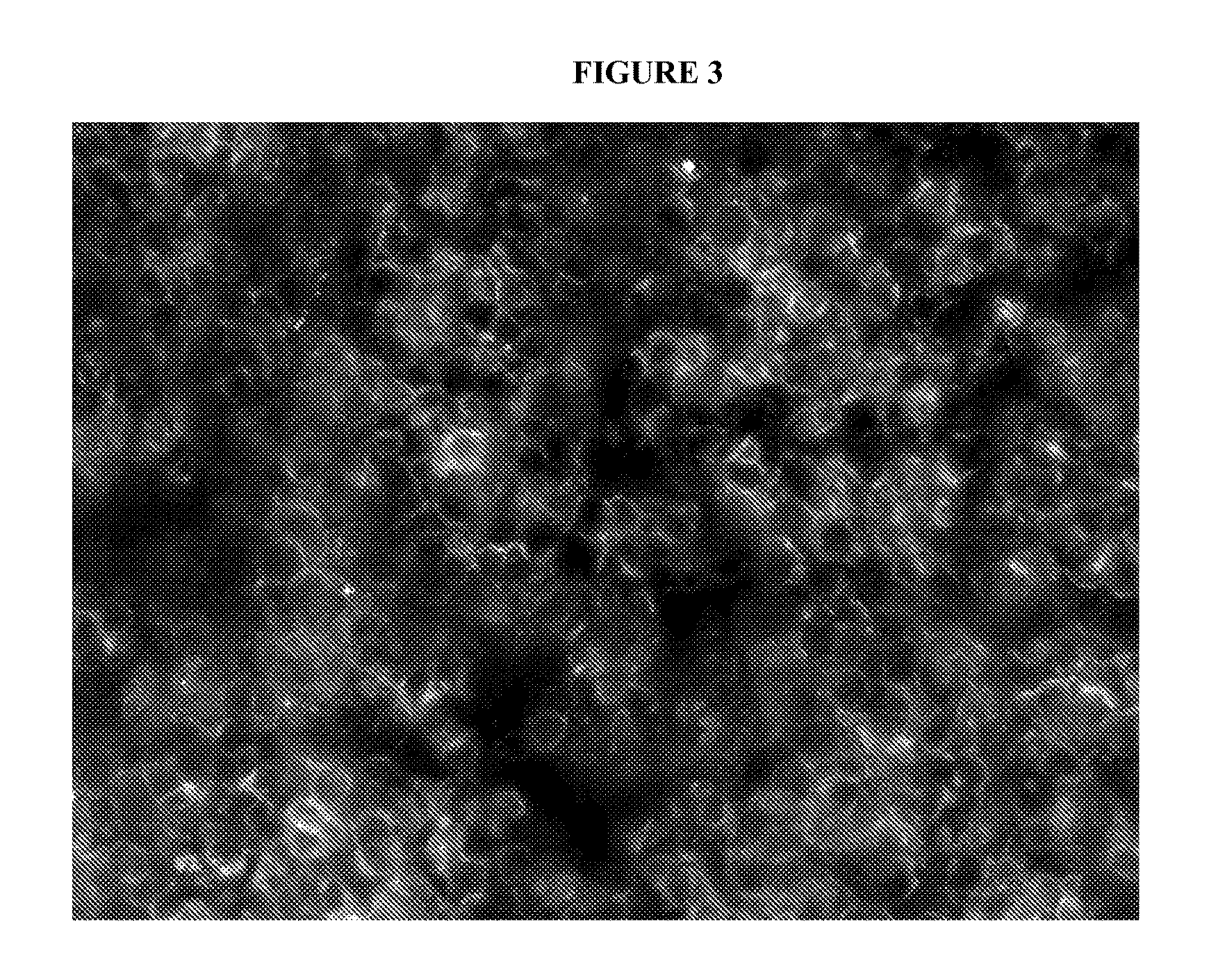Methods for separating and purifying endogenous, exogenous and recombinant proteins/peptides from plants and animals using aqueous-free, anhydrous strategies
a technology of recombinant proteins and peptides, applied in the field of recombinant proteins/peptides from plants and animals, can solve the problems of over 70% of the total operational cost, several molecular pharming initiatives have fallen short primarily, extreme shortages in manufacturing capacity, etc., and achieve the effect of preventing product loss
- Summary
- Abstract
- Description
- Claims
- Application Information
AI Technical Summary
Benefits of technology
Problems solved by technology
Method used
Image
Examples
example 1
Isolation of Transgenic Plant Seed Starch Zranules and Anhydrous Purification of the Recombinant Protein of Interest
[0050]Isolation of seed starch granules is done by first milling the seed into fine flour using a hammer mill, ball mill or elbow-jet mill. This processed flour containing starch granules, protein bodies and cell wall debris can be separated based on size and density using air-classifier or air-cyclone technologies, resulting in a starch granule fraction harboring the recombinant fusion protein on its surfaces. The gas-phase linker (Asp-Pro) can be cleaved by incubating the starch granules with a vapor of heptafluorobutyric acid at 60° C. for 18 hrs. The liberated protein of interest can be collected in an inert air flow and captured on a filter, or isolated through an additional air-classification or air-cyclone step.
example 2
Isolation of Algal Chloroplast Starch Granules and Anhydrous Purification of the Recombinant Protein of Interest
[0051]Isolation of algal chloroplasts is done using a density gradient or a hydrocyclone. The isolated chloroplasts are sheared using sonication and the starch granules within can be subsequently isolated using starch granules' distinctive buoyant density, i.e. a sucrose gradient or hydrocyclone. The isolated starch granules are dried to a moisture content of 25% or less using a dryer and incubated with 0.2% heptafluorobutyric acid vapors at 60° C. for 18 hrs. The liberated protein of interest can be collected in an inert air flow and captured on a filter, or isolated through an air-classification or air-cyclone step.
[0052]Cultures of algae transformed by the gas-phase cleavable linker-protein of interest (GPCL-POI) expression cassette are dried into cellular powder and then mechanically ruptured by air abrasion (particle-particle collision in air jet mills) and air classi...
example 3
Purification of E. coli Expressed Recombinant Proteins by Starch Granule Binding and Dry Fission
[0053]Recombinant proteins can be expressed using E. coli, yeast, insect or mammalian cell lines. Expression of recombinant proteins as puroindoline fusions in these hosts will allow for their batch purification using starch granules as affinity beads. The addition of starch granules to the expression slurry of any host cell platform harboring puroindoline fusions will result in the binding of the recombinant protein::puroindoline fusion onto the starch granule surfaces. The starch granules can then be isolated from the endogenous host proteome and cellular debris using prior art such as batch decanting, gradients, filtration or centrifugation technologies. These starch granules can be rigorously washed with sterilized water or buffers to ensure removal of any loosely bound endogenous host proteins and / or cell debris. The isolated starch granules harboring this recombinant fusion protein ...
PUM
| Property | Measurement | Unit |
|---|---|---|
| reaction temperature | aaaaa | aaaaa |
| reaction temperature | aaaaa | aaaaa |
| reaction temperature | aaaaa | aaaaa |
Abstract
Description
Claims
Application Information
 Login to View More
Login to View More - R&D
- Intellectual Property
- Life Sciences
- Materials
- Tech Scout
- Unparalleled Data Quality
- Higher Quality Content
- 60% Fewer Hallucinations
Browse by: Latest US Patents, China's latest patents, Technical Efficacy Thesaurus, Application Domain, Technology Topic, Popular Technical Reports.
© 2025 PatSnap. All rights reserved.Legal|Privacy policy|Modern Slavery Act Transparency Statement|Sitemap|About US| Contact US: help@patsnap.com



